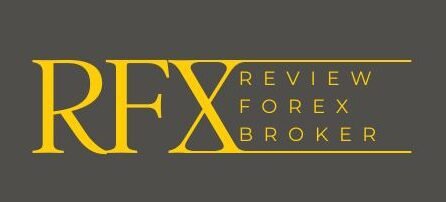Choosing the right trading platform is essential for success in forex trading. Your trading platform serves as your gateway to the forex market, allowing you to execute trades, analyze price charts, manage risks, and utilize tools and indicators. With numerous platforms available, it can be challenging to determine which one best suits your trading needs. In this blog, we’ll compare some of the top trading platforms offered by leading forex brokers, helping you make an informed decision.
Why Trading Platforms Matter
The trading platform you choose can significantly affect your overall trading experience. Key features such as user interface, execution speed, charting tools, risk management options, and even mobile access can make a substantial difference in how effectively you trade.
Top Forex Trading Platforms to Compare
- MetaTrader 4 (MT4)
- MetaTrader 5 (MT5)
- cTrader
- Proprietary Trading Platforms
- TradingView
Let’s break down these platforms and assess their strengths, weaknesses, and the brokers that offer them.
1. MetaTrader 4 (MT4)
Overview:
MetaTrader 4 is the most popular and widely used forex trading platform globally. Known for its user-friendly interface and robust functionality, MT4 has been the go-to platform for forex traders of all levels for over a decade.
Key Features:
- Ease of Use: MT4 is straightforward, making it suitable for both beginners and seasoned traders.
- Advanced Charting Tools: MT4 provides customizable charts, technical indicators, and drawing tools.
- Expert Advisors (EAs): MT4 allows for automated trading using EAs, which can be coded in MQL4.
- Wide Range of Assets: MT4 supports trading in forex, commodities, indices, and more.
Best For:
Traders looking for a time-tested, reliable platform with powerful charting tools and support for automated trading.
Offered By:
Most leading brokers, including Pepperstone, IC Markets, FxPro, and XM.
Drawbacks:
- Limited Asset Classes: While MT4 is ideal for forex, it has limited asset classes compared to more modern platforms.
- Older Technology: MT4 is older software, and some features may feel outdated compared to newer platforms.
2. MetaTrader 5 (MT5)
Overview:
MT5 is the more advanced successor to MT4, offering additional features and more asset classes. While MT5 retains much of MT4’s core functionality, it is designed to provide more advanced tools and is better suited for traders interested in more than just forex.
Key Features:
- Multi-Asset Trading: MT5 allows trading in forex, stocks, commodities, and futures.
- More Timeframes and Indicators: MT5 offers more charting timeframes and built-in technical indicators compared to MT4.
- Advanced Order Types: MT5 includes additional order types and features for better risk management.
- Economic Calendar: MT5 has an integrated economic calendar, which MT4 lacks.
Best For:
Traders who want to trade a variety of asset classes beyond forex and desire a more advanced platform.
Offered By:
Top brokers like Admiral Markets, Exness, and FP Markets offer MT5.
Drawbacks:
- Complexity: MT5 can be more challenging to use than MT4, especially for beginners.
- Not Fully Backwards Compatible: MT5 is not fully compatible with MT4 EAs, which may be an issue for traders accustomed to MT4.
3. cTrader
Overview:
cTrader is a powerful alternative to MetaTrader platforms, popular for its clean interface, speed of execution, and advanced features designed for professional traders. cTrader is especially popular among traders who prefer ECN (Electronic Communication Network) brokers due to its transparency.
Key Features:
- Transparent Pricing: cTrader is ideal for traders who want better pricing transparency and direct market access.
- Depth of Market (DOM): cTrader shows real-time market depth, allowing traders to see the liquidity of an asset.
- Automated Trading (cAlgo): Like MetaTrader platforms, cTrader supports algorithmic trading using its proprietary cAlgo tool.
- Web-Based Platform: In addition to desktop and mobile versions, cTrader offers a robust web-based platform with full functionality.
Best For:
Traders who prioritize ECN trading, prefer fast execution speeds, and want to avoid requotes.
Offered By:
Notable brokers like Pepperstone, IC Markets, and FXPro provide cTrader.
Drawbacks:
- Fewer Custom Indicators: Compared to MetaTrader platforms, cTrader has fewer available custom indicators and EAs.
- Smaller User Base: While growing in popularity, cTrader is still less widely used than MetaTrader platforms, meaning there are fewer third-party tools and resources.
4. Proprietary Trading Platforms
Overview:
Many forex brokers offer their own proprietary platforms, developed in-house to cater to their unique client base. These platforms vary in quality and features but often come with exclusive tools or better integration with the broker’s services.
Key Features:
- Tailored Experience: Proprietary platforms are often designed to integrate seamlessly with the broker’s services, providing better usability for their clients.
- Unique Tools: Some proprietary platforms offer features or tools that are unavailable on third-party platforms like MT4 or cTrader.
- Web and Mobile Access: Many proprietary platforms focus on ease of access and are often web-based or mobile-first, allowing traders to manage trades on the go.
Best For:
Traders who want a more customized experience or are loyal to a particular broker.
Offered By:
Brokers like Saxo Bank (SaxoTraderGO), IG Markets (ProRealTime), and eToro (eToro Platform) offer proprietary platforms.
Drawbacks:
- Limited Customizability: Proprietary platforms are usually less customizable than MetaTrader or cTrader.
- Less Versatile: Since these platforms are unique to the broker, they may lack third-party support and resources.
5. TradingView
Overview:
While not a full-fledged trading platform like MT4 or cTrader, TradingView is one of the most popular charting tools in the industry. It provides advanced charting capabilities and social trading features, making it an excellent addition to any trader’s toolkit.
Key Features:
- Advanced Charting: TradingView offers some of the best charting tools available, with a vast selection of indicators and customizable options.
- Social Trading: TradingView has an integrated social network where traders can share ideas, strategies, and market analysis.
- Multi-Asset Support: TradingView supports multiple asset classes, including forex, stocks, cryptocurrencies, and more.
Best For:
Traders who value advanced charting and social trading features. It is often used in conjunction with other trading platforms for its superior technical analysis tools.
Offered By:
Many brokers integrate TradingView into their platforms, including OANDA, FXCM, and FOREX.com.
Drawbacks:
- Not a Standalone Platform: TradingView is a charting tool, not a full trading platform, meaning you will still need to use another platform to execute trades.
Conclusion
Choosing the right trading platform depends on your trading style, preferences, and the tools you need to succeed. MT4 remains the industry standard for forex traders, especially for those who rely on automated trading and simple usability. MT5 offers enhanced features for traders looking to diversify into other asset classes. cTrader stands out for its transparency and ECN focus, making it ideal for professional traders. Proprietary platforms can offer a tailored experience, while TradingView is unbeatable for charting and social features.
When selecting a broker, it’s essential to consider the platforms they offer, as the right platform can significantly enhance your trading performance. Whether you’re a beginner or a seasoned trader, there is a platform out there that matches your needs.

